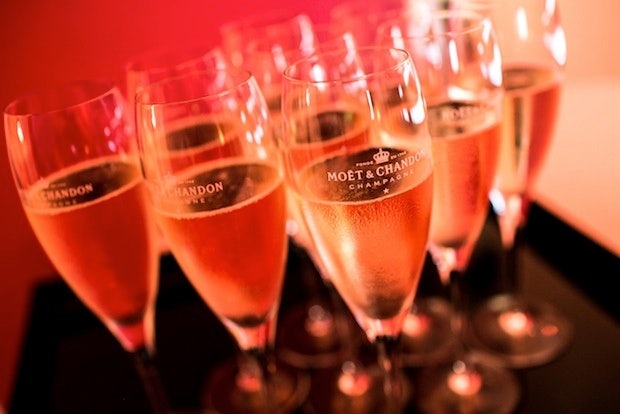French Bubbly To Benefit From Official Recognition#

Moët & Chandon has been very active in its marketing activities in China. (Moët & Chandon)
China may receive its fair share of copyright infringement accusations from the United States, but it can now say it holds superiority when it comes to protecting the Champagne name after officially registering it for use exclusively by sparkling wine producers from the Champagne region of France.
The registration was carried out on May 27, after representatives from Le Comité Interprofessionnel du Vin de Champagne (CIVC) visited Beijing for negotiations.
Champagne makers hope China's promising market will save them from dropping sales in Europe, especially in France, where last year brought a 9 percent decline.
Although only one out of every 200 bottles of wine consumed in China is sparkling, the country is the world's fastest-growing location for Champagne exports. It is currently only the 12th largest market for them, but the fact that it is the fifth largest for wine overall shows the market's potential if Champagne culture catches on. With wine's 142 percent growth in consumption since 2007 and projected 40 percent growth for the next three years, Champagne certainly has room to catch up.
According to recent Jing Daily commentary, major Champagne and sparkling wine makers have undertaken heavy marketing efforts in China, but several factors contribute to the fizzy drink's relative lack of popularity. The first of these issues is that a sparkling wine drinking culture is not embedded in China, but rather has to be introduced to the market. Since the majority of wine consumed is for business, causing the celebratory bubbly drink to lag far behind the more typically consumed red wine. In addition, high-end Bordeaux or Burgundy is the preferred wine of choice for gift-giving purposes. Sparkling wine makers hope to make the drink more popular with younger, trendier crowds who drink it during leisure time.
Moët & Chandon in particular has made sensationalist efforts to grab the attention of Chinese consumers through efforts such as a Great Wall hot-air balloon fly-by, promotional parties and events in Beijing and Shanghai, a China visit by brand ambassador Scarlett Johansson, and social media campaigns. The brand is currently running promotional campaigns with actress Fan Bingbing, which can be seen in the video embedded below.
Some concern has been expressed over the possibility that Chinese sparkling wine makers will be put at a disadvantage thanks to the different connotations of the Chinese words for "Champagne" and "sparkling wine." The Chinese word for Champagne is a transliteration of the French word, xiangbin jiu (香槟酒). Many Chinese sparkling wine makers have preferred using this name to the translation of "sparkling wine" or qipao jiu (起泡酒), because qipao not only means "bubbling," but can also translate into "to blister" or "to sprout boils"—not the best marketing language for a classy, celebratory beverage.
One interesting fact about the new registration is that it puts French Champagne makers in the position of stating that the United States needs to rise to China's level when it comes to name protection. The United States, which is the world's second-largest export market for Champagne, does not fully protect it, but rather bans the "Champagne" designation on sparkling wines produced in 2006 and after. However, it makes exceptions for beverages such as "Napa Valley champagne. “The US is increasingly isolated in the world. It is one of a handful of countries, along with Russia, Vietnam and Argentina, that does not protect the champagne name,” said Thibaut Le Mailloux “For us, it’s a matter of principle and consumer information."
Champagne is not the only alcoholic beverage name that is protected in China. Authorities have also registered Cognac, Scotch, and Napa Valley wine.